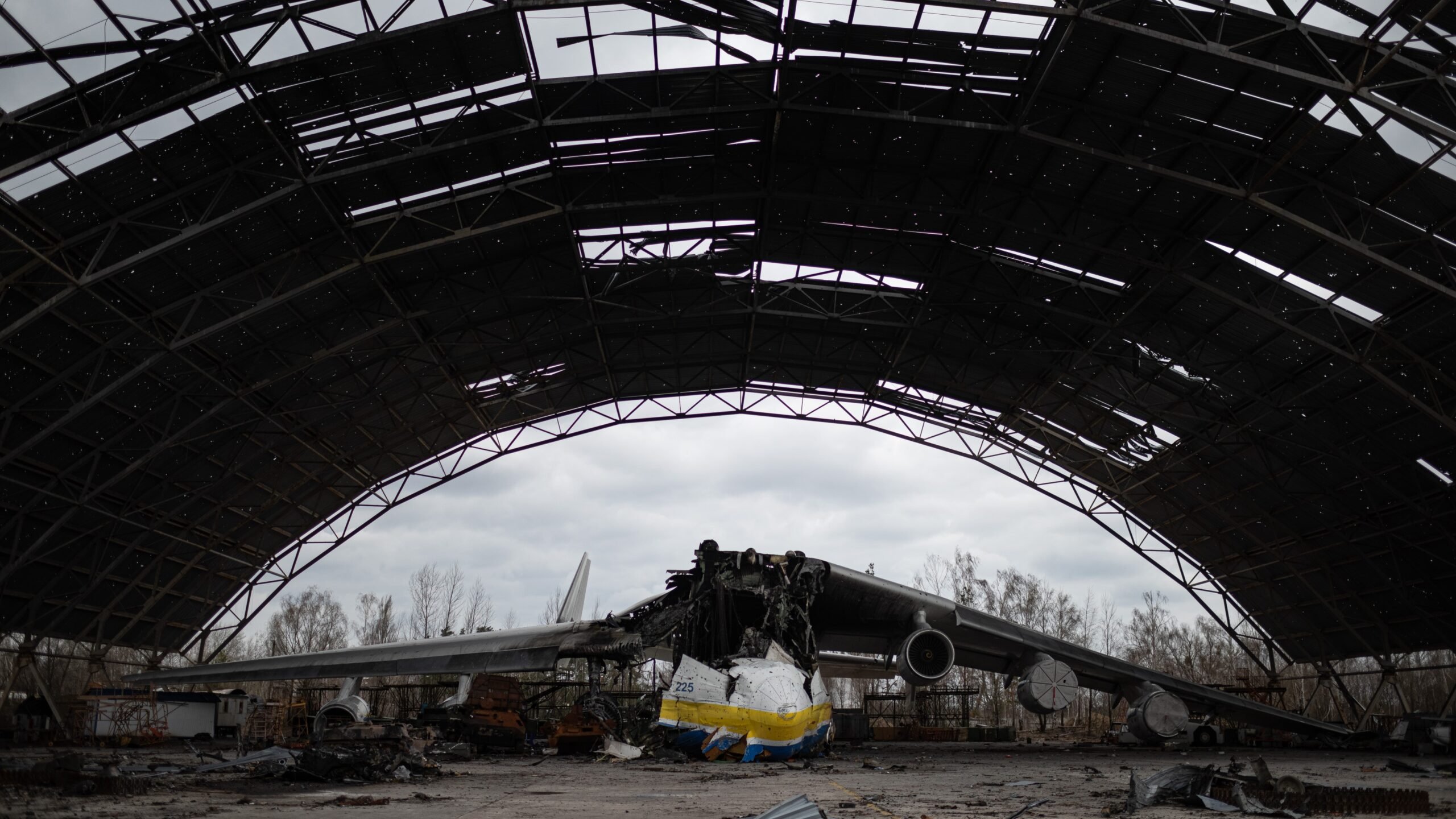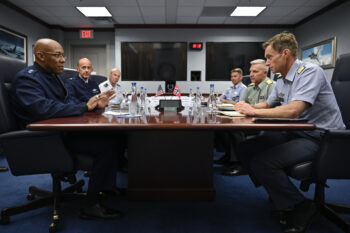
The destroyed Ukrainian Antonov An-225 “Mriya” cargo aircraft, which was the largest plane in the world, among the wreckage of Russian military vehicles at the Hostomel airfield on April 8, 2022 in Hostomel, Ukraine. (Alexey Furman/Getty Images)
WASHINGTON: Russia’s inability to establish air superiority over the skies of Ukraine against a much smaller, less equipped Ukrainian air force has been a shock to Western militaries watching the conflict from afar, but NATO air forces should be careful not to learn the wrong lessons from the conflict, according to Norway’s top air force officer.
“The Western intelligence communities have kind of made Russia ten feet tall, and it looks like they’re two feet small,” Maj. Gen. Rolf Folland, chief of the Royal Norwegian Air Force, said in an exclusive July 1 interview with Breaking Defense.
However, “I am very cautious not to jump to conclusions too early because this is special conflict,” he added. “A full out conflict between Russia, and the West would be something else. I think we shouldn’t underestimate their level of capability, because I don’t think we have seen it.”

Air Force Chief of Staff Gen. CQ Brown, Jr., left, speaks with Maj. Gen. Rolf Folland, chief of the Royal Norwegian Air Force, during a meeting at the Pentagon, Arlington, Va., June 30, 2022. (US Air Force/Eric Dietrich)
Much has been made of Russia’s initial offense into Ukraine in February, when its assault on Kyiv ultimately failed after a series of seemingly baffling tactical decisions and massive logistics failures, leading to backups of dozens of stalled Russian tanks and shortages of fuel and food. At this point, it is unclear whether these blunders were caused by a general incompetence within the Russian military or whether Russian forces were simply not given enough time to carry out proper plans before Russian President Vladimir Putin ordered troops to invade, Folland said.
However, these missteps could reveal a critical Russian weakness: An inability to conduct high-tempo operations across land, sea, air and space and cyber domains.
“Either they didn’t have the time to plan this right,” Folland said. “Or they don’t have the level of competence that is needed to actually orchestrate integrated warfare in all domains. We don’t know.”
RELATED: Norway’s chief of defense: Finland, Sweden in NATO opens up a lot of possibilities
Russia’s failures in this arena could present an opportunity for the US military and its NATO allies. The Pentagon has made “multi-domain operations” and “joint all domain command and control”— basically, the ability to share data across domains and coordinate simultaneous operations — the cornerstones of how the services will fight in future wars, and several other nations have followed with similar concepts such as the UK’s Integrated Operating Concept.
In March, the United Kingdom hosted NATO’s first multidomain operations conference, which sought to give military officials a venue to discuss allied nations’ different visions for the concept. Last week, NATO adopted a new strategic concept that stated members must prepare for “ high-intensity, multi-domain warfighting against nuclear-armed peer-competitors.”
In a large-scale conventional war with NATO, Russia will likely lose, as NATO’s conventional weaponry and ability to integrate together far outpaces Russia’s capabilities, Folland said. However, Russia still holds a powerful cudgel in the form of its extensive nuclear arsenal, which it has successfully used to deter NATO from taking additional actions to protect Ukraine.
“They see that nuclear deterrence is working, because if it hadn’t been working then we would probably have had a war in Ukraine [that] was different,” he said. “I think without nuclear deterrence, other powers would have been more engaged in conflict.”
Where Russia has been successful in Ukraine is in its employment of long-range precision missiles, which it has used to great effect to bomb Ukrainian bases and airfields, critical infrastructure such as grain terminals and railways, and civilian targets such as residential buildings and hospitals.
“They have produced a lot of different types of missiles that can strike targets at long distance at high speeds,” Folland said. “I think we kind of knew that, but if I should guess, I think they will continue to do that and be even better.”






















